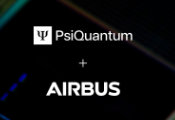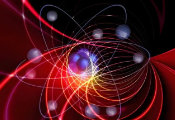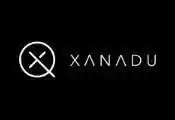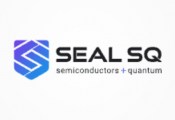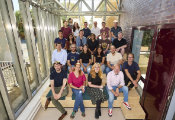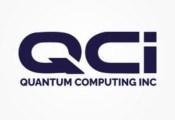Spooky States & Figure Eights: Stepping Into the Quantum Computing ‘Ring’
NEWPORT NEWS, VA – Deep in outer space, invisible hands mold the universe. One is dark matter, an unseen substance thought to bind distant galaxies. The other is dark energy, a force believed to push stellar structures apart with gravity-defying strength.
Searching for signs of these strange cosmic influences, scientists at the U.S. Department of Energy’s Thomas Jefferson National Accelerator Facility designed a device to measure their supposed effects on spinning electrons. Then, they realized the idea held promise in another realm: quantum computing.
Now, a Jefferson Lab-led team is throwing its hat into the proverbial ring with a unique "CPU” born from particle accelerator technology and the study of the visible universe. It could rival or even outperform some of the noisy, energy-hungry prototypes being explored.
A full patent was filed on their quantum computing "core,” which involves trapping charged atoms (ions) and injecting them into a figure-eight-shaped beamline. This stainless steel, vacuum-sealed ring is designed to maintain ions’ spin as they circulate. Stored in this way, the atoms can act as quantum bits – qubits, for short.
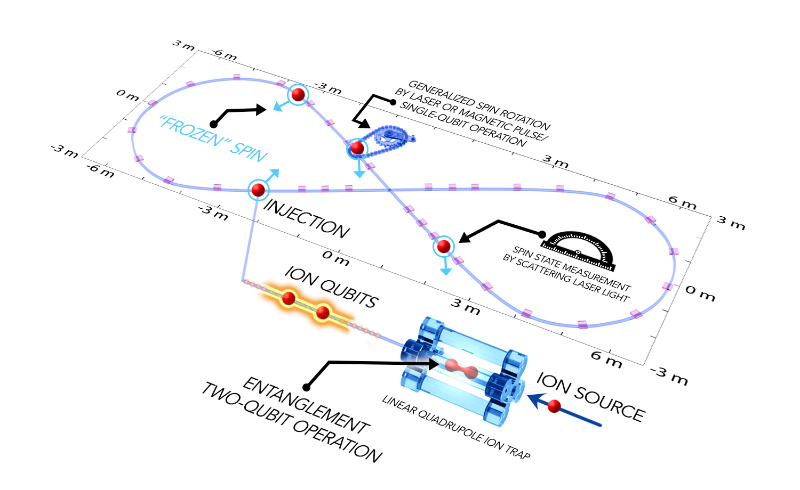
The physical world owes its existence to an excess of matter over antimatter, Figure-eight rings are an ideal place to measure electron properties that could explain this imbalance. Spinning within these rings, the elementary particles are also expected to be hypersensitive to hypothetical forces related to dark matter and dark energy.
Entanglement is a fundamental strangeness of quantum systems in which particles’ physical states, such as spin, can be directly correlated – in principle even if they are light-years apart. This can be accomplished within a trap that confines the ions – in this case, Ytterbium – using an oscillating electric field. The trap is under ultrahigh vacuum and cooled to temperatures colder than deep space.
Arguably, the most critical requirement of a quantum computer is that it be a “closed box,” meaning it must be isolated from the rest of the universe. External interference or information leakage from within can disturb the foamy sea of probabilities on which the computer operates.
Isolation through prevention and cancellation of external interactions allows the ions to maintain their quantum states. This quality is called coherence, and it must last long enough for the computer to perform its complex algorithms.
Thanks to a beamline vacuum and naturally occurring cancellation of the spin effects in a figure-eight layout, such a ring is expected to offer coherence times of greater than three hours. Like in the Marvel Cinematic Universe’s “Ant-Man” franchise, three hours is a lifetime in the quantum world – and this lifetime far surpasses the current state of the art.
For comparison, IBM’s superconducting Condor computer offers coherence times of about 200 microseconds, and Xanadu’s 216-qubit system can go about 34 milliseconds without decohering. Quantinuum’s H2 trapped-ion system performs a little better than these platforms with coherence greater than 100 seconds, and Atom Computing’s neutral-atom platform has a 40-second span.
The figure-eight ring is also expected to outperform these systems in the number of qubits it can store. At about 12 meters long and 6 meters wide – about the area of a small apartment – these rings could amass as many as 3,000 qubits. They can scale up even further by stacking multiple rings, Suleiman said. The sheer number of qubits would go a long way in fault tolerance and error correction.
Meanwhile, IBM’s Condor operates on 1,121 qubits and Atom Computing’s neutral-atom machine has 1,180. Quantinuum’s H2 currently uses 32 qubits, as does IonQ’s Forte trapped-ion system.
Brookhaven Lab is also examining storage rings for quantum computing, but its patented model is elliptical in design and relies on extreme beam cooling. Meanwhile, Suleiman’s team is on the verge of a full patent for its figure-eight that takes advantage of rather robust quantum spin effects not involving hard-to-achieve quantum features of the particle’s orbital motion.



